Some weeks ago, a domestic subway construction company sent our company to repair three A4VG250 hydraulic piston pumps for shield machines. After the engineer disassembled the pump, he found that the rotary group was severely damaged, the copper shoe was basically worn flat, and there were a lot of copper debris in the pump housing. The subway construction company who sent the pump for repair asked us the cause of the damage to the A4VG250 Hydraulic Pump. After observing the piston and damaged parts, we came to a preliminary conclusion: the piston, one of the parts replaced during the previous maintenance of this pump, was a domestic A4VG250 pump repair spare parts made in a small Chinese factory. Due to the poor manufacturing process and material heat treatment methods, the overall performance of the piston does not meet the high-strength requirements. The outer diameter of the piston expands under high pressure, eating up the fitting clearance, and the piston and the cylinder bore copper sleeve have contact friction, generating high temperature. The piston reciprocates in the cylinder bore without a lubricating oil film, pulling out the cylinder copper sleeve of the hydraulic pump, which eventually causes the copper shoe to shatter and the hydraulic pump rotary group to be seriously damaged.
Please see the figure below:
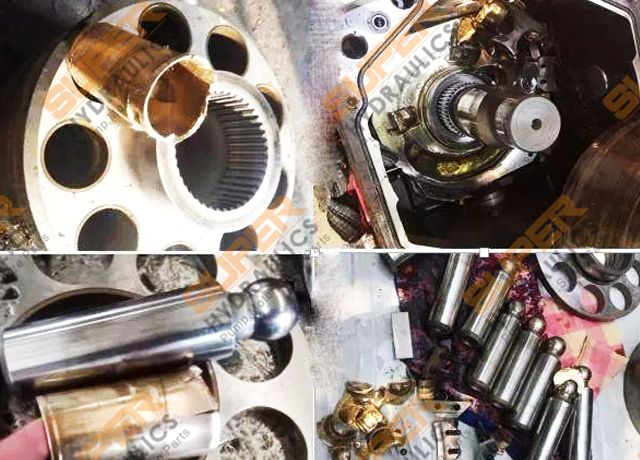
Our company determined that the damaged piston was domestically made based on the patterns left by the turning tool on the sliding shoe surface of the other two pumps. Because the sliding shoe on the piston of this heavy-duty pump made by Rexroth Germany is die-forged, and the surface of the sliding shoe oil reservoir can be seen to be rough after die-forging, while the domestic sliding shoe is machined by machine tools, with machining marks of the turning tool, and the empty groove of the sliding shoe is machined by a milling cutter. There is a big difference between the two after comparison.
Please see the figure below:
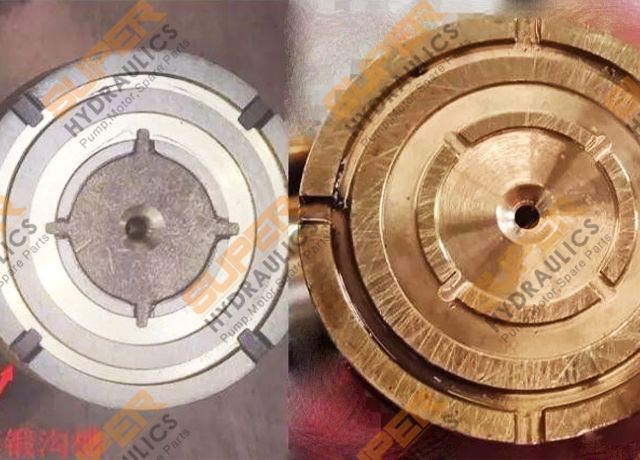
Observe the damaged piston surface, and clearly see wear marks on the piston rod surface caused by high temperature due to friction after expansion, as shown in the figures below:
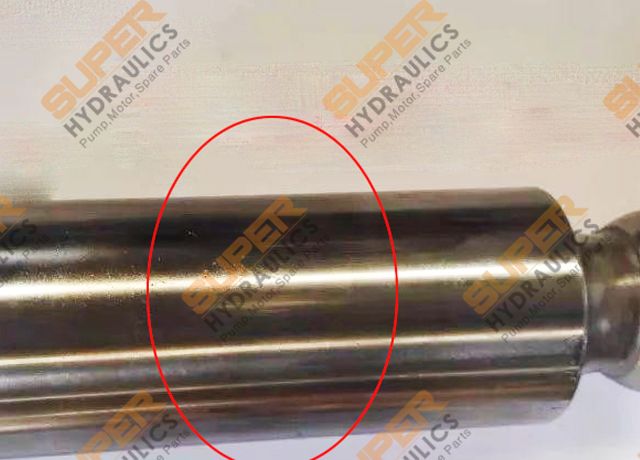
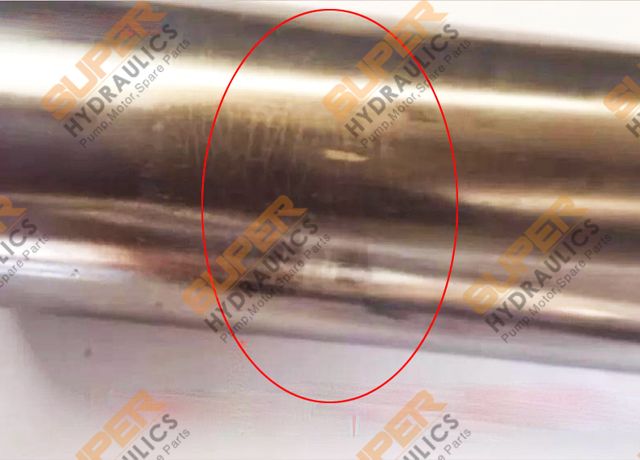
The cause of the damage was as follows:
During the design and material selection of the piston body, machining methods, heat treatment methods, etc., the theoretical basis of the plastic deformation of metal materials under the transient alternating impact of the piston in the pressure field was not mastered, the tribological principle of the friction pair between the piston and the cylinder hole in the piston pump was not mastered, and there was no core technology of its own Only measuring and mapping the external dimensions, copying the original, will result in the following consequences: the hollow aperture of the imitation piston is repeatedly subjected to a large impact load and then instantly unloaded, and the instantaneous pressure field mutation causes the piston body to: first, expand under the action of pressure and eat up the original fit clearance with the cylinder hole; second, the expanded piston intensifies the reciprocating friction with the cylinder liner in the absence of a fit clearance, generating high temperature. When the reduced-diameter piston is stuck in the cylinder hole, the return plate pulls the sliding shoe to pull out the copper sleeve in the cylinder hole. After the copper sleeve exits the cylinder hole, the reciprocating motion trajectory of the piston in the cylinder hole deviates and shifts, causing the sliding shoe to collide with the fixed gap protection device. As a result, the rotating body components inside the piston pump housing are pulverized.
Regarding the problem of piston expansion, this phenomenon is very common, whether it is domestic pistons or pistons produced in Europe and the companyed States. However, the elongation of original piston metal is low under the impact of pressure field. Within a controllable range, the sliding shoe also produces uniform convex elastic deformation under the action of oil film pressure field.
In the creep process of original pistons, the creep decreases with the extension of time, no longer continues, and enters a stable period.
Creep is divided into three stages:
The first stage is the deceleration creep stage. In this stage, the creep rate of the piston is very large when it is first used. As time goes by, the creep rate gradually decreases and reaches the minimum value.
The second stage is the constant creep and steady-state creep stage. The characteristics of this stage are that the creep rate of the piston body metal remains almost unchanged, and the slightly expanded diameter size of the middle section of the piston outer diameter is relatively stable and unchanged even under the impact of pressure field.
The third stage is the creep elongation period. As the use time of the piston reaches or exceeds the critical period, the piston metal material enters the fatigue period. The metal crystals relax and lose stability, and the creep rate increases from small to large. As time goes by, the creep rate gradually increases. The creep rate value will exceed the maximum value of plastic deformation, and there is a risk of complete failure of the piston pump.
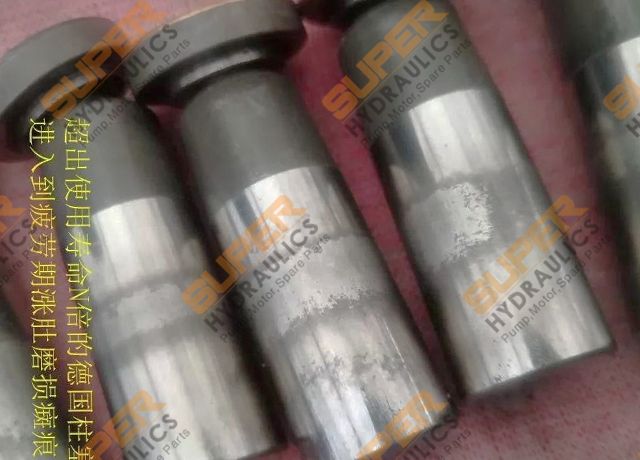
There is also a special momentary overload that causes the metal material of the piston to burst.
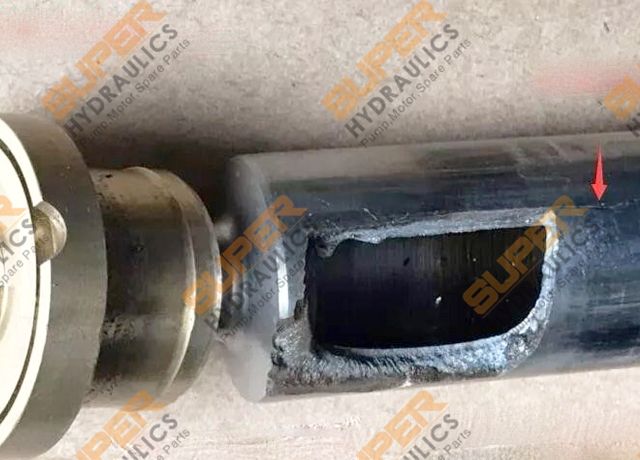
We have ever measured a large number of pistons made in various countries around the world. Piston expansion is a common phenomenon. The piston expansion used in high-pressure piston pumps in developed countries with hydraulic technology in Europe and the companyed States is within a controllable range, but the piston expansion of light piston pumps in the middle and high sections is also serious. The piston expansion range of Japan and South Korea is larger than that of European and American countries. The figure below shows the change in the expansion size of the piston made by Rexroth.
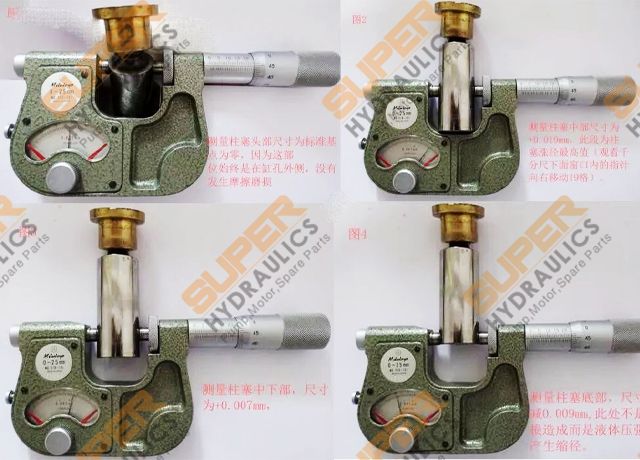
Want to buy quality A4VG250 pump repair spare parts, contact our experts today to see if we can provide some help!
Contact: Frank Xie
Phone: +86-18951952293
Tel: +86-25-83408096
Email: sales@super-hyd.com
Add: 97#, Luxiying, Gulou Dis, Nanjing, China.
We chat
